When A Fishing Crew Spotted A Creature Stranded On The Ice They Couldn’t Believe What They’d Found
Lifestyles

It started as just another cold day for Mallory Harrigan and Cliff and Alan Russell. The trio were sailing the coastal waters of Labrador, Canada, in search of crab. But soon they faced something entirely unexpected. On a nearby iceberg, a creature of some sort appeared to be struggling. It looked freezing and lonely, and voracious seagulls were dive-bombing it. Moved by its plight, Harrigan and the two Russells felt they had no choice but to intervene... Then they were met with a huge surprise.

This was unfortunate because until this moment, things had been pretty plain sailing. True, the group were running a little behind schedule, but nothing untoward had occurred. As Harrigan recalled to People magazine a month later, “We were off to a late start. But there had been an unusual amount of ice that prevented us from getting out.”

For all intents and purposes, then, the day had developed like any other. The trio sailed their vessel – a boat called The Northern Swan – toward the settlement of Pinsent’s Arm. There, they planned to stop for fuel. But as the crew made their way to the town, their ordinary day turned into an extraordinary one.
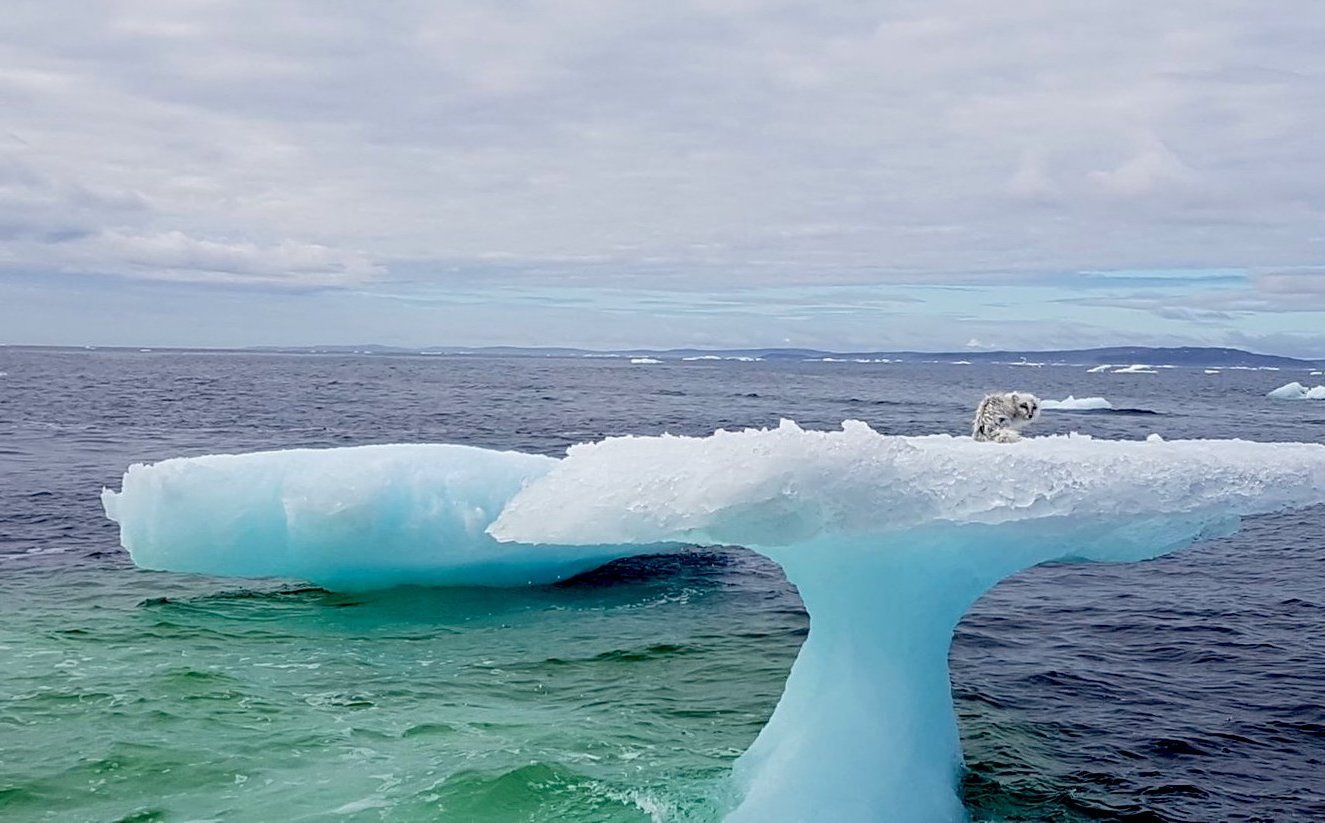
About four miles out from the coastline, the crew caught sight of a conspicuous iceberg. The thing looked like a mushroom – but that wasn’t all that grabbed the trio’s attention. Some sort of animal appeared to be stuck on top of it... and it looked like it needed help.
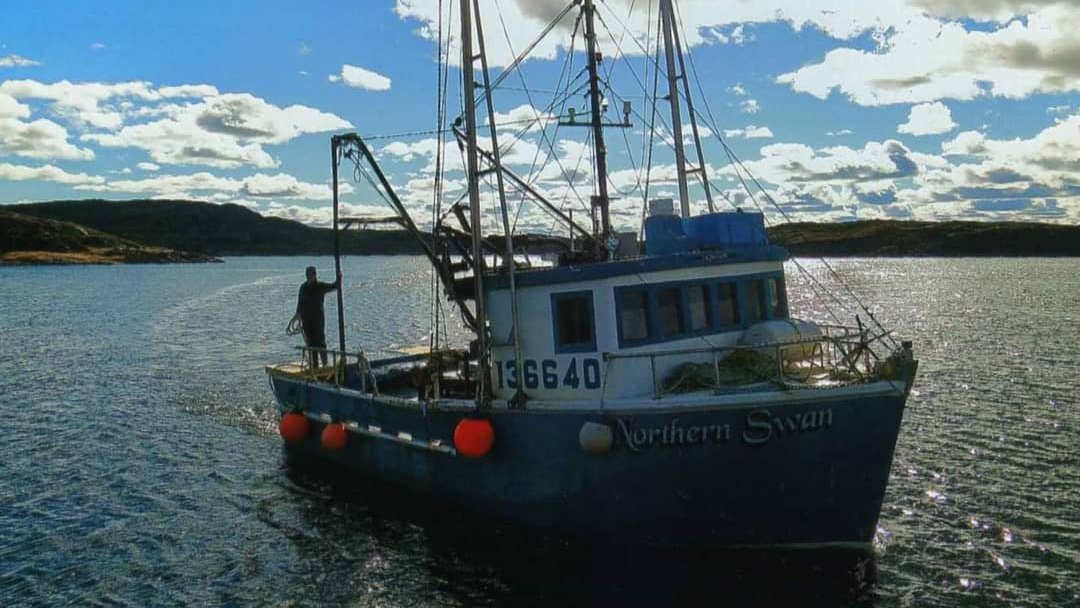
This iceberg was floating out to sea, with the animal stuck on top in some distress. At first, the three-person crew thought that the creature must have been a seal. But if that was the case, then why hadn’t it dived into the water and swam to safety?

Probably because this animal wasn’t a seal – nor, for that matter, was it any kind of marine creature. And without being a natural swimmer, the vulnerable critter was stuck on that iceberg with no chance of rescue. That is if the crew of The Northern Swan didn’t get to work – fast.
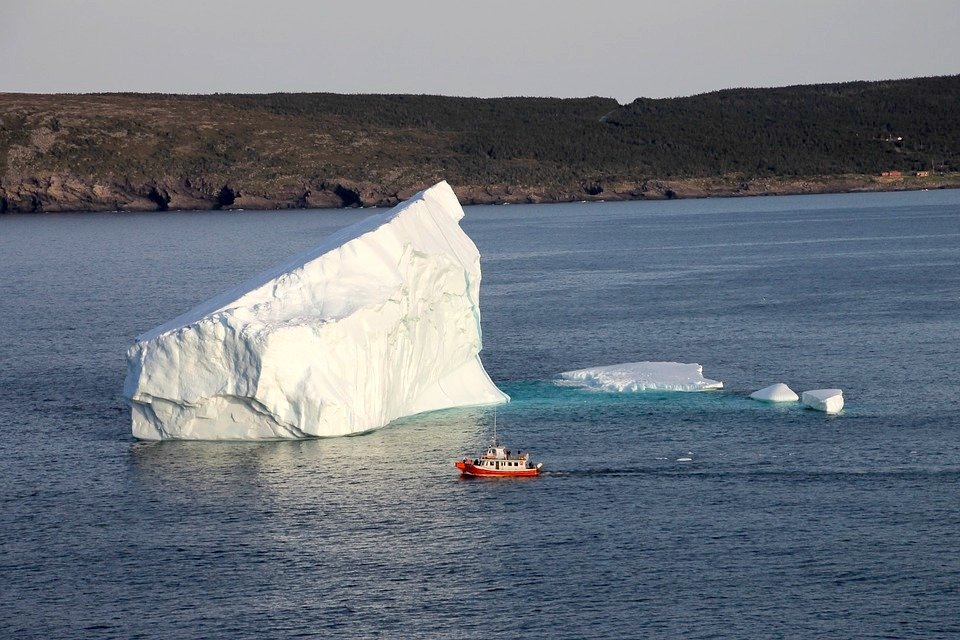
Thankfully, Harrigan, partner Cliff, and his son, Alan, were all up to the task. The trio, it seems, couldn’t sail past the trapped animal without putting their own agenda on hold and coming to its aid. But their rescue mission wasn’t going to be a walk in the park.

Icebergs, after all, can prove to be very dangerous things. Anyone remember the Titanic? Yep, the frozen structures are sometimes unstable. So bits of ice are liable to break off and crash into the waters around them. This means that people should avoid getting too close in case they’re struck on the head by falling debris.

The coastal waters of the Canadian province of Newfoundland and Labrador contain plenty of icebergs floating around. But only a small fraction of these actually come from the Canadian Arctic region itself. It’s said to only be about a tenth, in fact, with the rest calving off from the glaciers of Greenland.

But regardless of the icebergs’ origins, Newfoundland and Labrador end up with a lot of them. And there are so many in the region that the people living there make use of them in interesting ways. The water from the icebergs can be drunk, for instance. It’s used in the production of alcoholic beverages such as beer, gin and vodka.

And back in April 2017 an iceberg off Newfoundland and Labrador made significant waves. The structure was enormous. People could even see it from the shore of a small settlement called Ferryland. The town mayor spoke to news agency The Canadian Press about the thing, too. He said, “It’s the biggest one I[’ve] ever seen around here.”

The 150-foot-tall iceberg became a sensation, with people in the region descending upon Ferryland to catch a glimpse of it. Tourists uploaded pictures of the berg online, generating remarkable interest. Eyes from all over the world were now focused on the tiny Canadian town.

So 2017 was a big year for icebergs drifting into the northern reaches of the Atlantic Ocean. Experts even recorded more than usual that year and offered two reasons to account for the spike. One: winds of unusual intensity and direction may have encouraged the bergs into the area. But the more troubling suggestion was that global warming had led to the behemoths breaking off from Greenland’s glaciers.

Regardless of the reasons for their appearances, icebergs can be mesmerizing to behold. After all, the structures can feature dashes of color, tunnels and pieces of rock frozen into place. Creatures have even been known to get trapped and preserved within the floating chunks of ice.
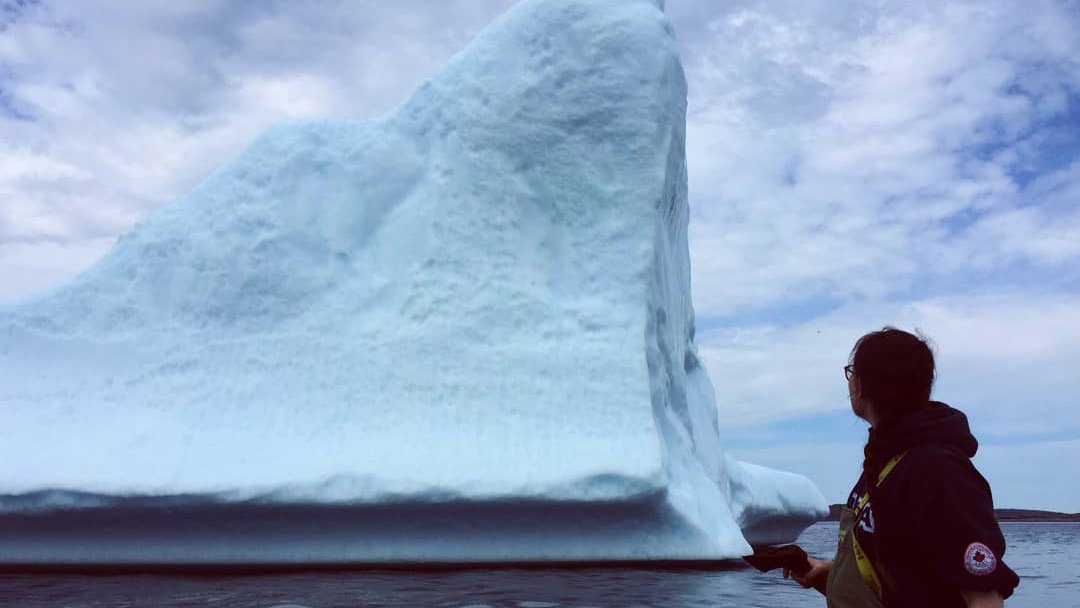
Yes, you can never be sure of what you’re about to encounter when you’re faced with an iceberg. But the crew of The Northern Swan were still in for a shock when they got closer to the animal trapped on the iceberg before them. As they edged closer, it became clear that the identity of the stricken animal wasn’t what they had initially thought.

Speaking to The Dodo a few days after the dramatic incident, Harrigan recalled their feelings. She said, “We thought it was a baby seal.” Yet they dispelled that theory as they edged a little nearer. So, if it wasn’t a seal, then what had the crew happened upon?

Much to the surprise of the three sailors on board The Northern Swan, the creature wasn’t a marine animal. For that matter, it wasn’t any species that you’d expect to find this far out to sea. As Harrigan later recalled to People, “It was a small Arctic fox.”

Arctic foxes tend to live inside of burrows. So that begs the question: how or why had one managed to become marooned on a wayward iceberg in the middle of an icy sea? Well, as Harrigan related to Bored Panda, Cliff had his own thoughts on the matter.

Harrigan said, “It had probably got stuck out there looking for a meal. Cliff says he thinks he got out there to check out a bit of meat on the ice and it broke apart, sending the cute fox out to sea.” All things considered, this theory seems pretty plausible.

Arctic foxes are generally tough creatures, well adapted to the harsh conditions of the Arctic region. Their little ears, furry feet and small snouts all help them to survive in extreme, sub-zero temperatures. But even so, this particular fox looked to be in big trouble when the crew of The Northern Swan found it.

The fox was emaciated and cold, apparently close to losing its life. Harrigan and the Russells were touched by the beast’s plight, but they were also a little reluctant to help. On top of the dangers of approaching an iceberg was the consideration that the fox was a wild animal. They couldn’t know how it might react to their presence.

Undeterred, though, the crew opted to act in the hope of saving the fox’s life. So they sailed their boat towards the berg and then attempted to lure the animal onto the vessel. But the creature was reluctant to ditch the berg in favor of the boat, as Harrigan later recalled to Bored Panda.

Harrigan explained, “[The fox] was trying to run away from us at first, so we had a tough time getting him aboard.” The creature must have been so confused at what was happening to him. And it must have been very worrisome for the crew, in case he reacted violently.

But the crew put aside their concerns to get the job done. If they left the animal, after all, it would likely perish. As Harrigan put it to The Dodo, “We knew we were his only chance for survival, as the winds had changed and were driving all the ice farther out to sea.”

But the animal still put up a determined fight. In fact, the crew had to think on their feet to gain control of the situation. Speaking to People, Harrigan explained what they did. She said, “We had to break off the piece of ice he was on so we could get him in the water and scoop him up with the dip net.”

Once he was in the icy water, the fox struggled and struggled until he lost all his energy. It was only then that the crew were able to pull him aboard. From there, they set up a temporary bed to allow the stricken creature to rest and regain its strength.

Speaking to People, Harrigan recalled, “[The fox] crawled into a corner and curled into a ball. We tried to feed him chips and crackers, whatever we had on hand, but he wouldn’t eat for a long time.” This was a concern, of course, as the animal was in dire need of nourishment.

The crew members worried that their rescue efforts may have been in vain, too. The fox’s life appeared to be on a knife-edge, with his survival far from assured. But the creature eventually took to his new sawdust bed, where he could rest and warm up.

Harrigan explained to People that the fox had slipped off to sleep almost as soon as he curled up in his bed. And he didn’t rouse himself from his slumbers for quite a few hours after that. If anything, that’s a testament to the awful stresses that he must have endured on the iceberg.

Eventually, though, the fox woke up. And at this point, he finally took some food, as Harrigan explained to Bored Panda. She said, “He wouldn’t eat at all for the first five or six hours. We gave him chips and crackers, but he didn’t want anything until he woke up, and we fed him a tin of Vienna sausages.”

Now that the crew had demonstrated to the fox that they were trying to help him, he seemed to relax a bit. He’d finally gotten some food and sleep, after what we can only presume was a long, long time. And once the ship reached land, the fox was set free.

There’s no way to be sure of exactly how long the fox had been stuck on the iceberg, but his appearance did provide one clue. As Harrigan explained to People, “A friend of ours later told us that an Arctic fox should have brown fur this time of year. The fact that his coat was still mostly white was an indicator of how long he had been out there, which may have been weeks.”

You see, Arctic foxes have evolved to sport white fur during the winter. It’s a useful feature, too, because it helps them to blend in with their icy surroundings. But when summer comes around, the fur turns from white to brown or gray. This helps them to stay camouflaged after the ice has melted.

These adaptations help the Arctic fox to hunt down its prey, which in the summertime might include birds, rodents and fish. But when winter strikes, sources of food can be hard to come by. The fox might then resort to tracking polar bears in the hope of picking up some of their leftovers.

It was likely a hunt for food that led to Harrigan’s Arctic fox getting stuck on that iceberg. The animal was probably trying to survive – but got himself caught up in a tricky situation instead. Luckily, some Good Samaritans happened to be sailing by in the nick of time.

If the crew hadn’t happened to pass by, the fox probably would’ve ended up far out at sea with no hope of ever making it back to land alive. As Harrigan explained, “The winds had also changed southwest. So, if we hadn’t found him when we did, he would’ve only drifted farther out to sea.”

But luck – and a helpful group of people – intervened, and the fox survived his ordeal. And once the fox had eaten, his carers released him to live his own life once again. Harrigan told The Dodo, “We dropped him off in an old doghouse. He shook himself off and that was it!”
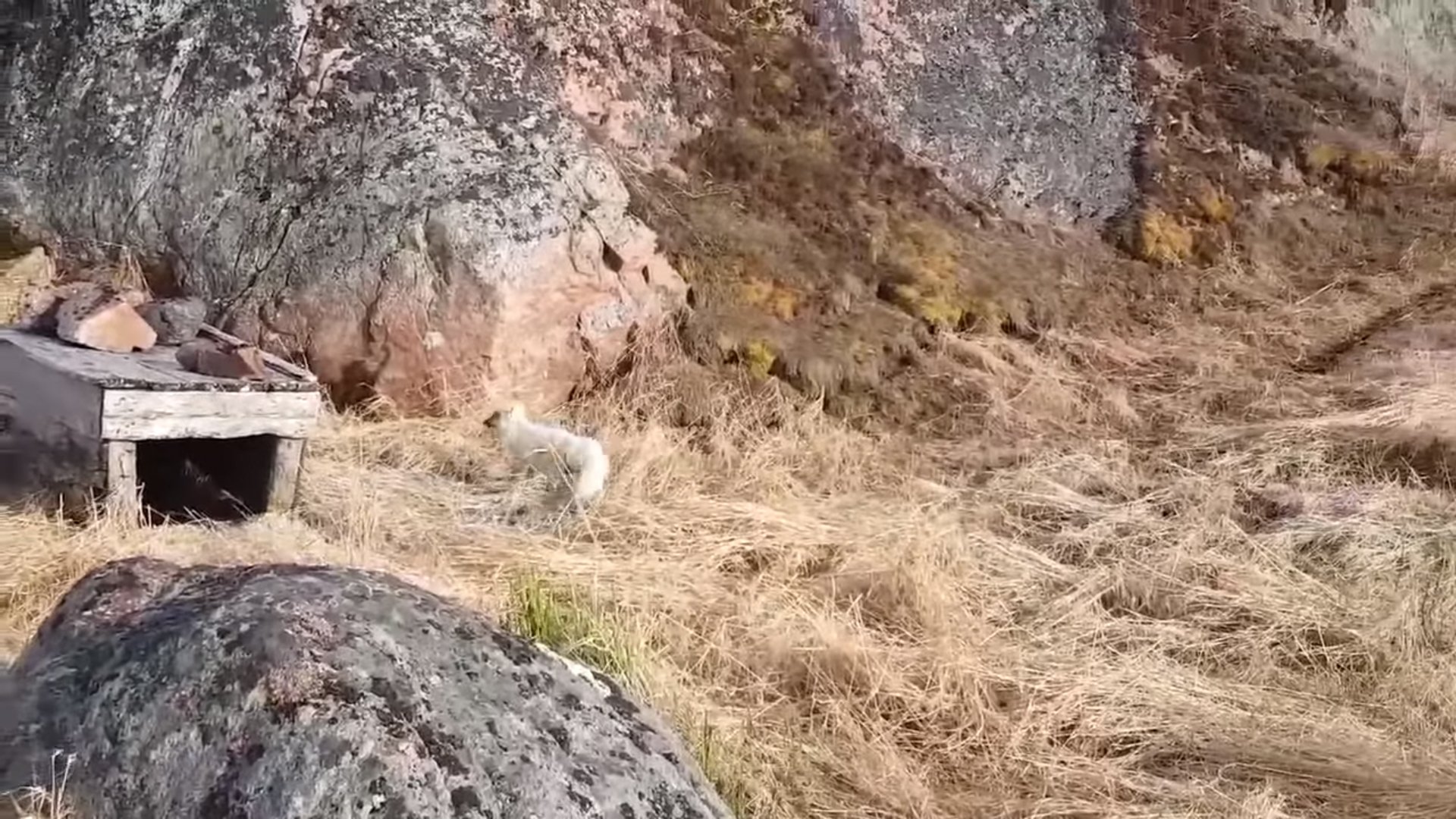
After all this, people could still see the fox roaming around the area where he’d been set free. In fact, Harrigan never had to say goodbye to the creature, as she explained to People. She said, “We can still see him from time to time, running around the island chasing small animals.”

In the wake of his grueling ordeal, the Arctic fox has become something of a celebrity. That’s to say, the story of his rescue has been reported all across the world. And that’s despite the relative lack of internet in the area in which he now roams.

In any case, Harrigan was delighted for the little Arctic fox that she helped to save from that deadly iceberg. As she told People, “We knew our little friend would be the talk of our small community, but never expected him to make waves around the world! We’re pretty excited.”

This was unfortunate because until this moment, things had been pretty plain sailing. True, the group were running a little behind schedule, but nothing untoward had occurred. As Harrigan recalled to People magazine a month later, “We were off to a late start. But there had been an unusual amount of ice that prevented us from getting out.”







